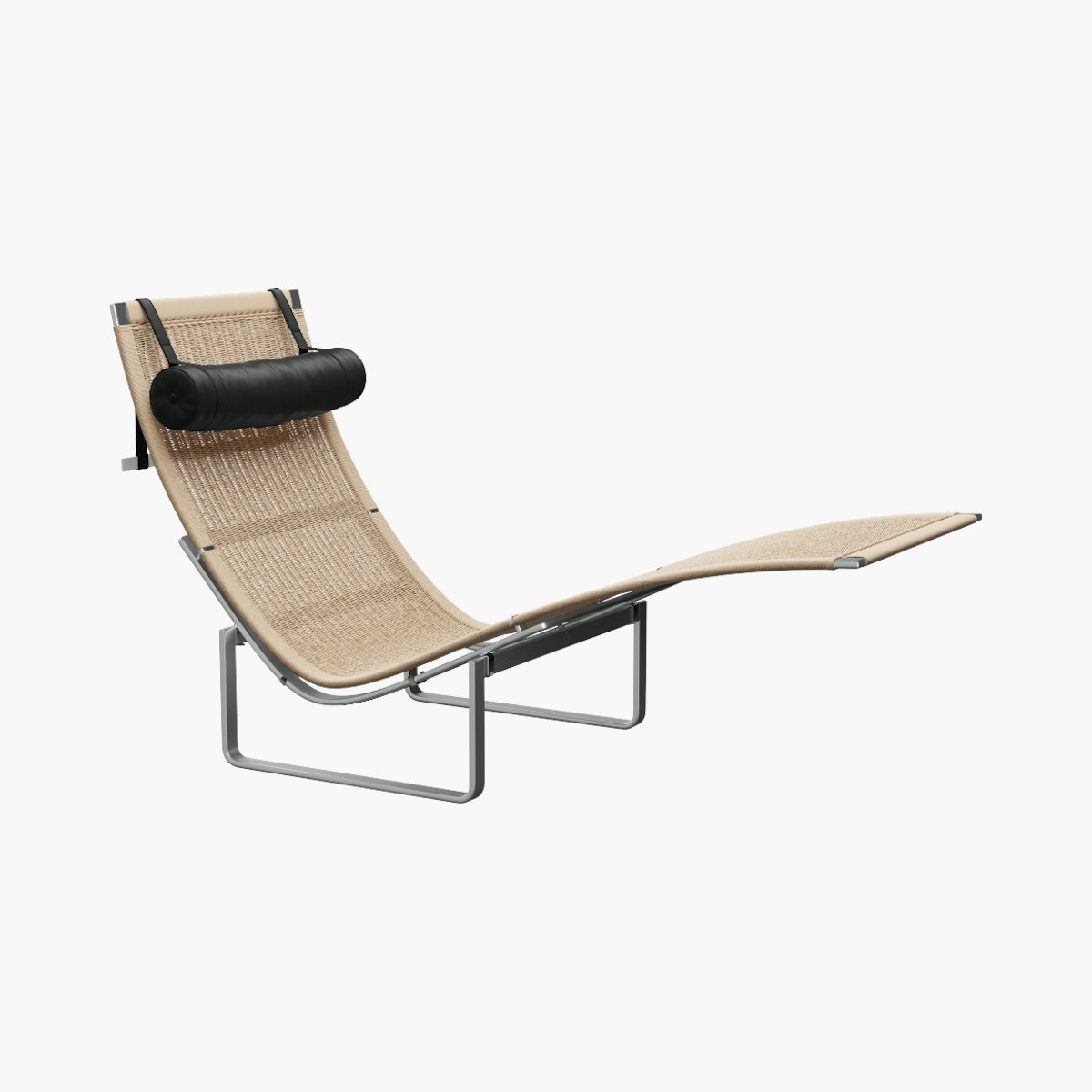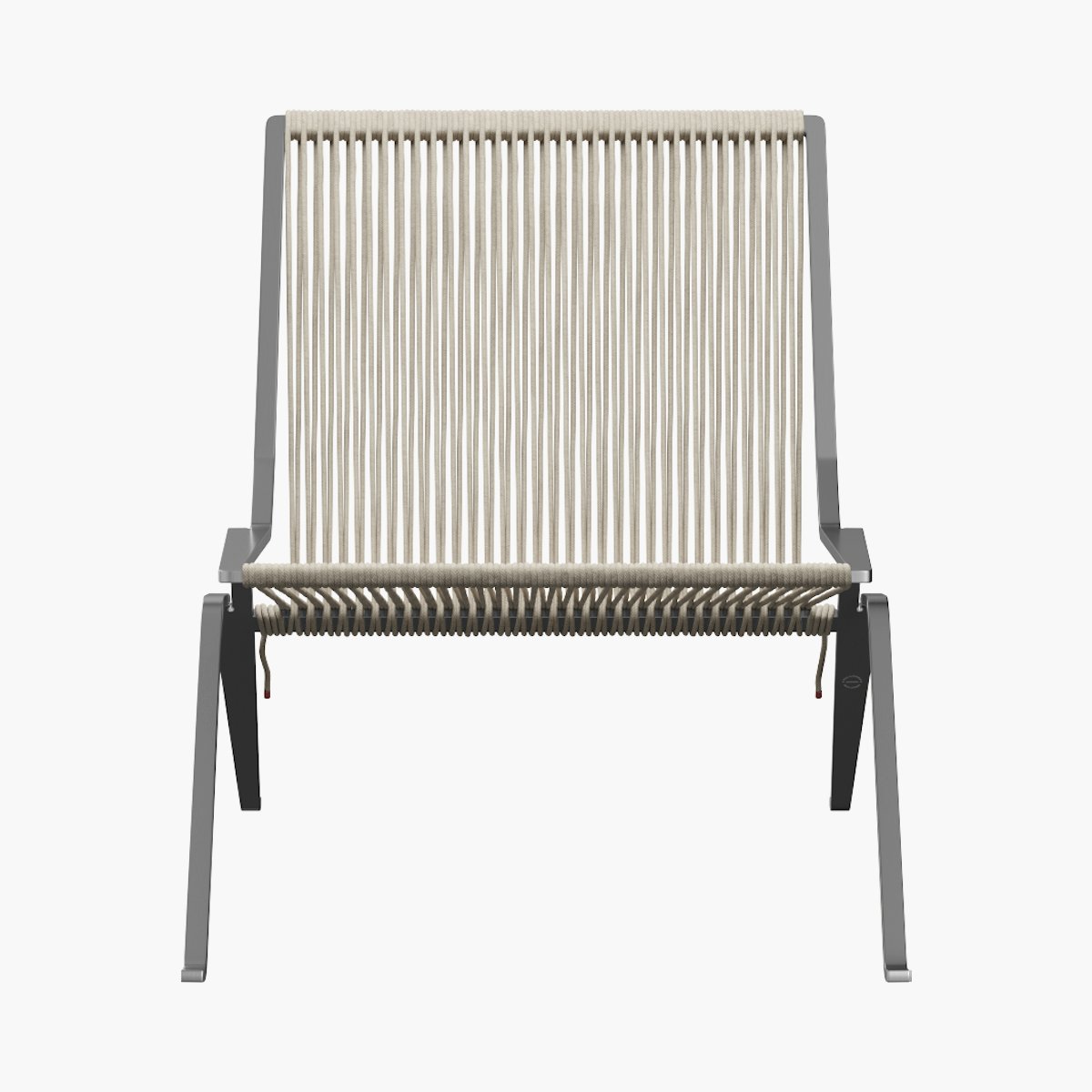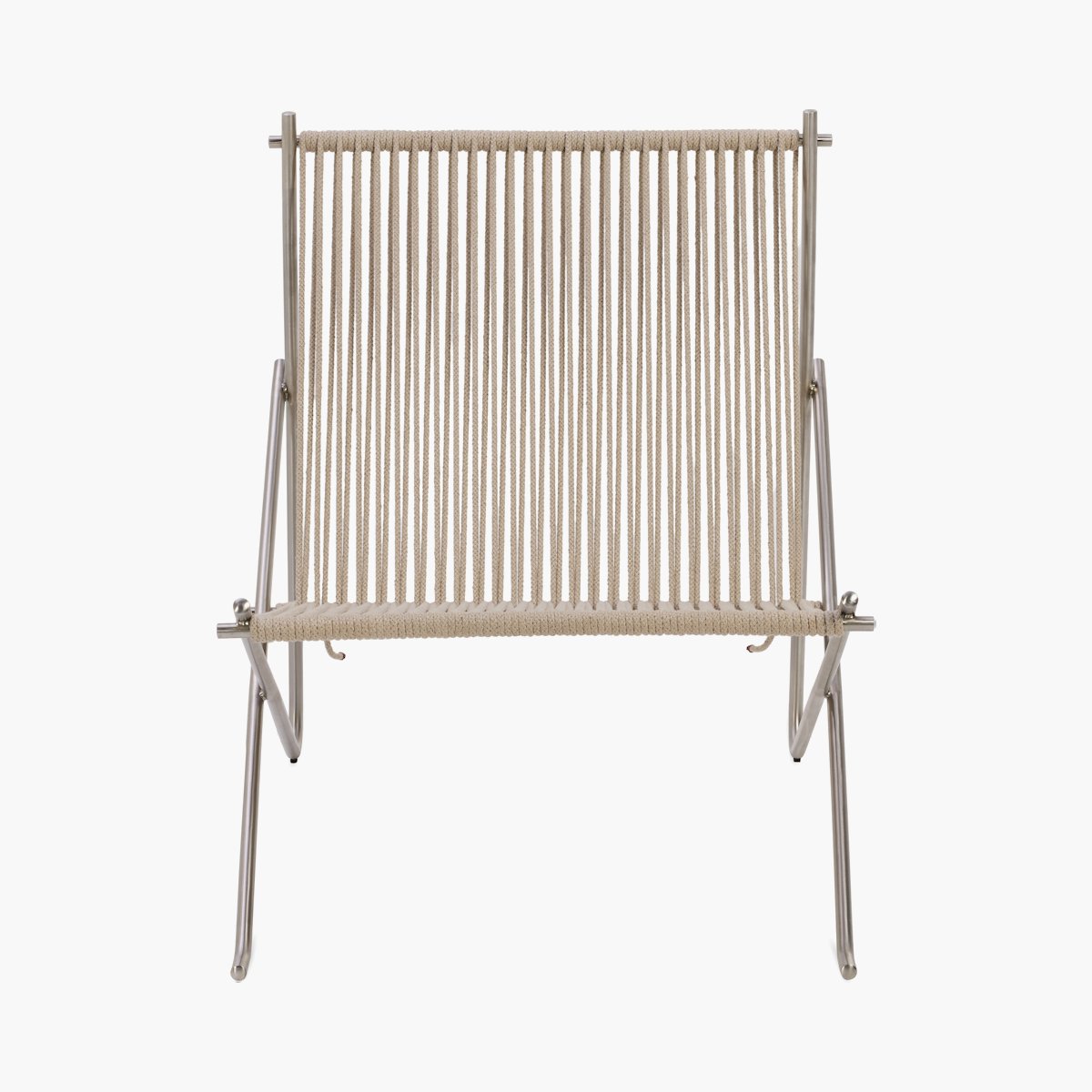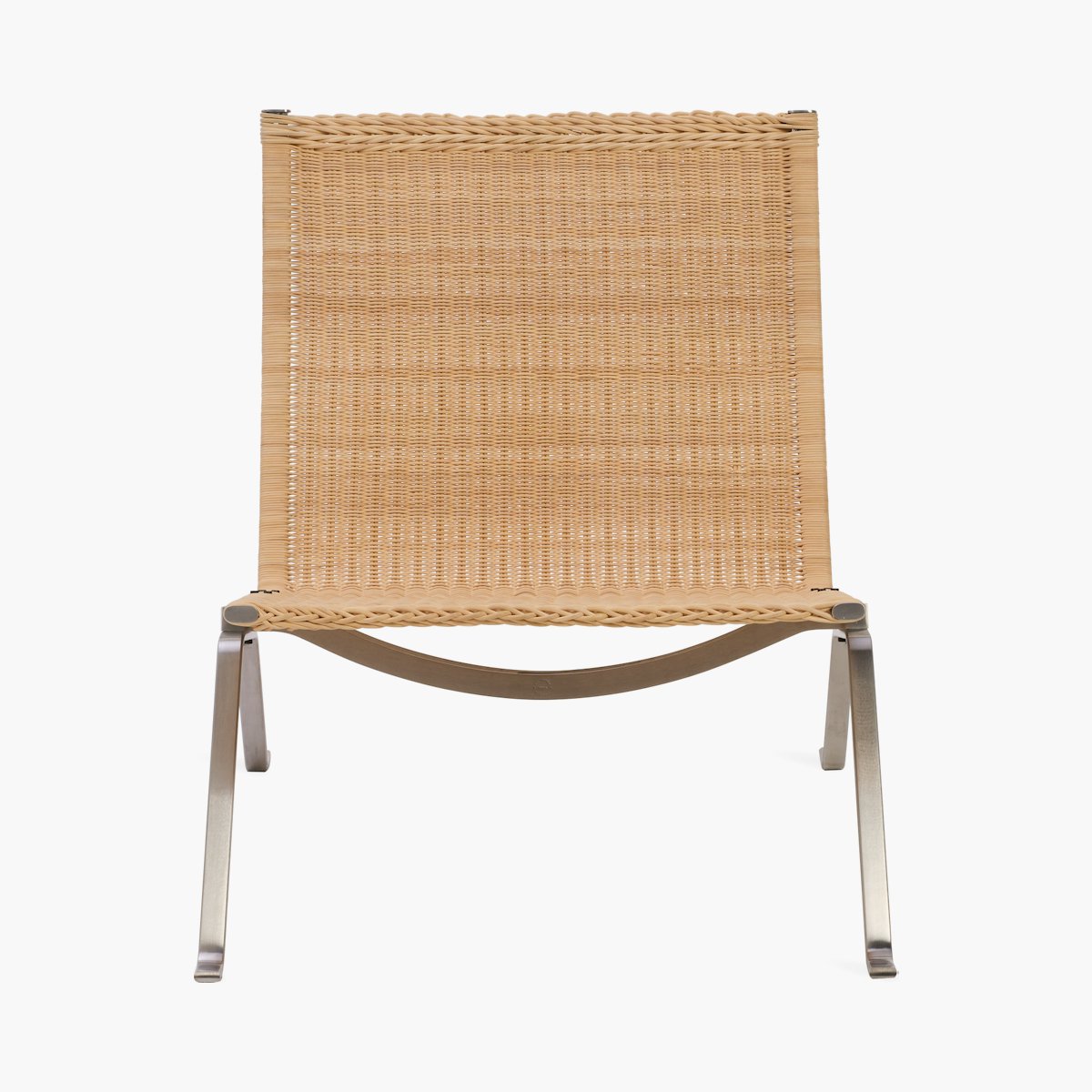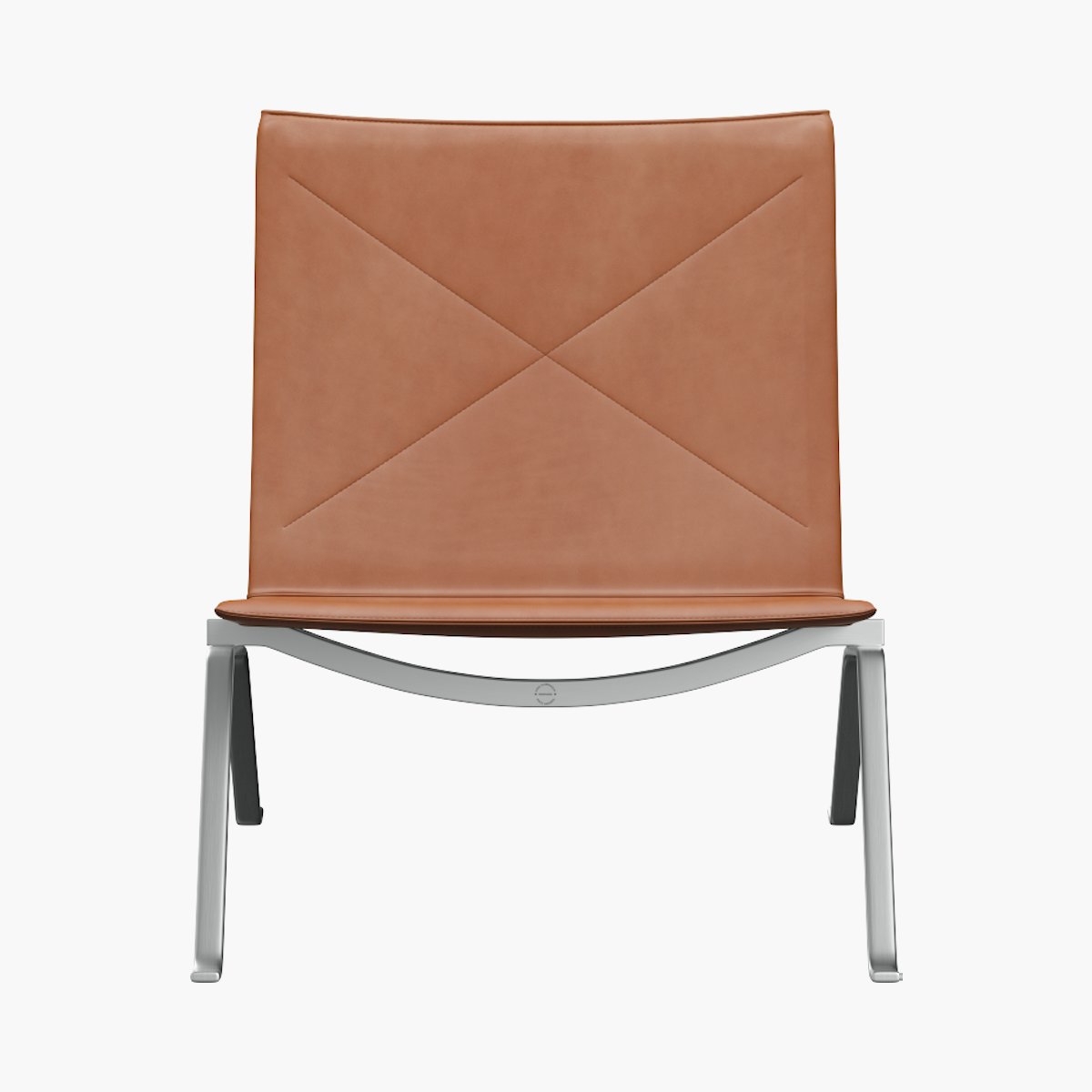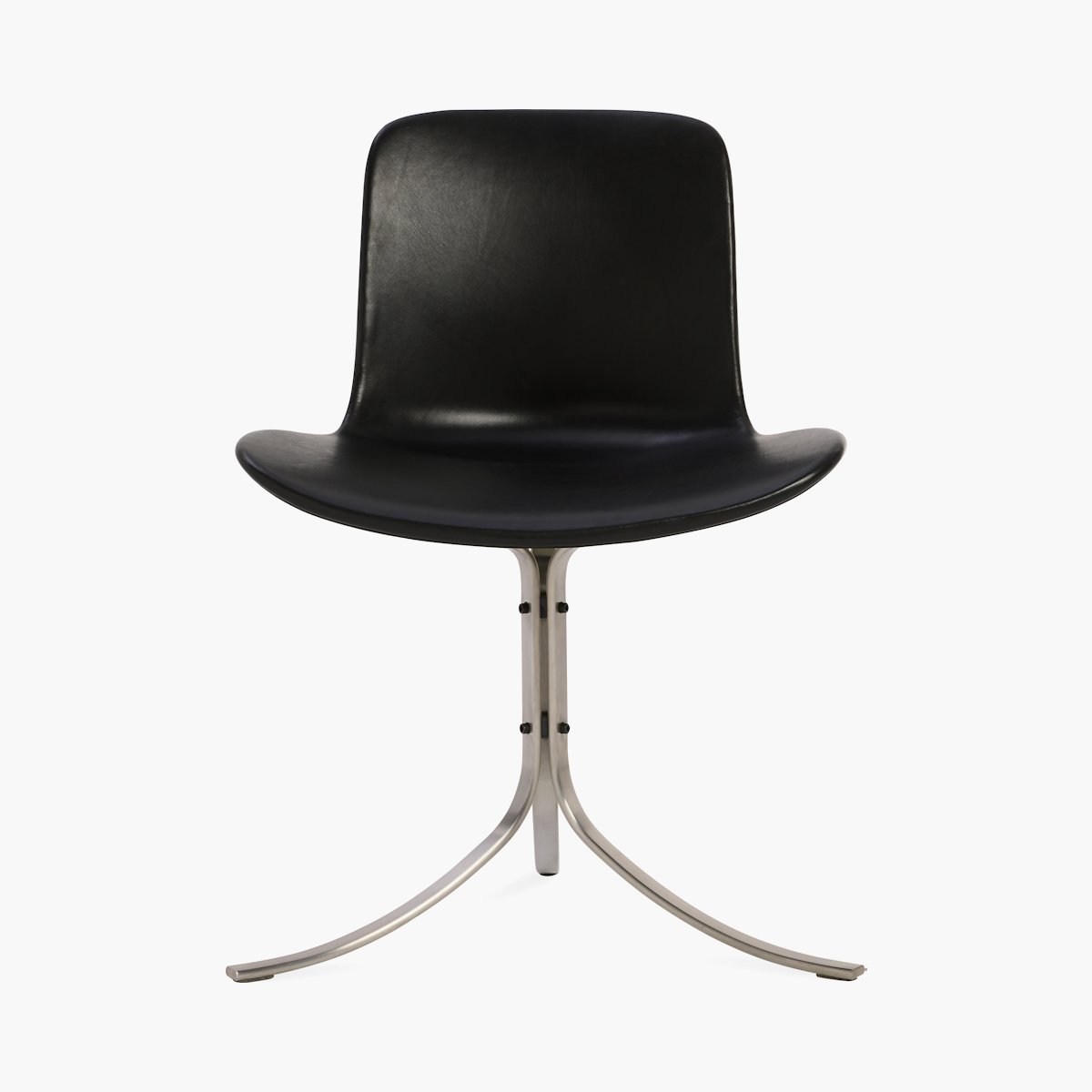Poul Kjærholm’s pieces are sculptures in themselves, but with an understated, subtle quality that makes them ideally suited for accompanying art. In 2004, New York’s Museum of Modern Art installed Kjærholm daybeds, tables and chairs in its galleries and restaurant. In his furniture, Kjærholm emphasized use and wear, with a focus on materials that were durable and improved with age. He viewed each piece as an element to support an architectural space and was equally interested in how a chair or lounge positioned the sitter in relation to the surrounding floors and walls.
Apprenticed as a cabinetmaker but drawn to the potential of steel, Poul Kjærholm brought craftsmanship and industrial materials together in the design of his PK series of furniture. His career was launched in 1952 when his graduation project from Copenhagen’s School of Arts and Crafts caught the attention of the Denmark design community. The project included a lounge chair crafted of a single piece of steel that demonstrated the type of material expressiveness that would soon become the signature of this designer. “Steel’s constructive potentials are not the only things that interest me,” said the designer. “The refraction of light on its surface is an important part of my artistic work. I consider steel a material with the same artistic merit as wood and leather.”
Kjærholm experimented at length with materials and production techniques, which served him well when he was hired in 1955 to design desks for the architecture school at the Royal Danish Academy of Fine Arts. Comprising a pine work surface atop a ready-made steel base, the desk showcased the designer’s ability to bring out the best characteristics of both materials. The contradiction made the cold materials feel inviting and warm, while the natural materials took on an element of control. For the rest of his career, Kjærholm’s furniture would combine industrial materials with natural ones, such as leather, cane and stone.
As for how Kjærholm named his work, the numbers following his initials can appear random; sometimes a higher number has an earlier design date than a lower number, and sometimes it’s the other way around. The disciplined Kjærholm, however, left nothing to chance, so naturally there’s an explanation: The numbers refer to a type of item – for example, 10 through 19 for small chairs with armrests.
Apprenticed as a cabinetmaker but drawn to the potential of steel, Poul Kjærholm brought craftsmanship and industrial materials together in the design of his PK series of furniture. His career was launched in 1952 when his graduation project from Copenhagen’s School of Arts and Crafts caught the attention of the Denmark design community. The project included a lounge chair crafted of a single piece of steel that demonstrated the type of material expressiveness that would soon become the signature of this designer. “Steel’s constructive potentials are not the only things that interest me,” said the designer. “The refraction of light on its surface is an important part of my artistic work. I consider steel a material with the same artistic merit as wood and leather.”
Kjærholm experimented at length with materials and production techniques, which served him well when he was hired in 1955 to design desks for the architecture school at the Royal Danish Academy of Fine Arts. Comprising a pine work surface atop a ready-made steel base, the desk showcased the designer’s ability to bring out the best characteristics of both materials. The contradiction made the cold materials feel inviting and warm, while the natural materials took on an element of control. For the rest of his career, Kjærholm’s furniture would combine industrial materials with natural ones, such as leather, cane and stone.
As for how Kjærholm named his work, the numbers following his initials can appear random; sometimes a higher number has an earlier design date than a lower number, and sometimes it’s the other way around. The disciplined Kjærholm, however, left nothing to chance, so naturally there’s an explanation: The numbers refer to a type of item – for example, 10 through 19 for small chairs with armrests.
Filters
Filters
6
Results
6
Results
View
Sort By –
New Arrival
C$ 7,149.00
-
C$ 10,399.00
5 colors
